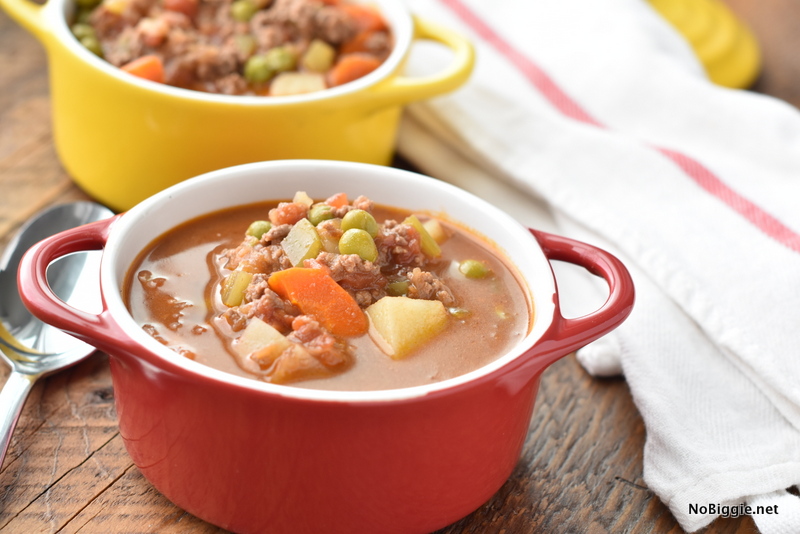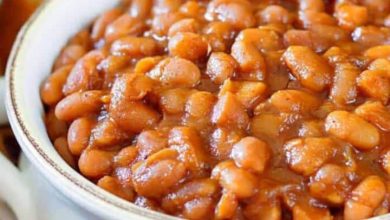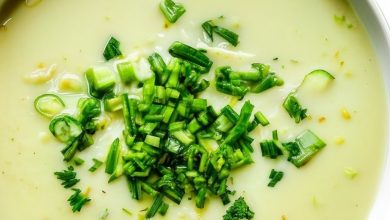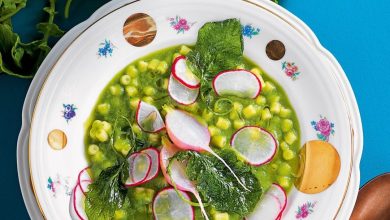Savory Chuck Wagon Stew: Hearty One-Pot Delight
Introduction
Imagine a rustic, soul-warming bowl of stew simmered to perfection, bursting with savory flavors and hearty ingredients that evoke the spirit of the open plains and frontier kitchens. This Chuck Wagon Stew is a timeless classic that embodies comfort, simplicity, and satisfying nourishment. Originating from the rugged American West, this dish was traditionally prepared by cowhands and settlers who relied on durable ingredients and straightforward techniques to create a meal that could sustain them through long days of work. Today, this hearty stew remains a beloved favorite for its rich flavors, ease of preparation, and ability to feed a crowd with minimal fuss.
At Love With Recipes, we believe in celebrating authentic, hearty dishes that bring family and friends together. This recipe takes the essence of the original Chuck Wagon Stew and enhances it with layers of aromatic herbs, tender meat, and nutritious vegetables, ensuring each spoonful is comforting and memorable. Whether you’re seeking a cozy weeknight dinner or a dish to serve at your next gathering, this stew offers warmth and satisfaction with every bite. The combination of beef, vegetables, and savory seasonings creates a balanced, flavorsome experience that will leave everyone craving more. Let’s dive into crafting this delicious, filling meal that celebrates rustic culinary traditions.
Time
Preparation Time: Approximately 20 minutes
Cooking Time: 2 hours 30 minutes
Total Time: About 2 hours 50 minutes
Needed Equipment
- Large Dutch oven or heavy-bottomed pot
- Measuring cups and spoons
- Mixing bowl or plastic bag for coating meat
- Wooden spoon or spatula
- Sharp knife for chopping vegetables
- Cutting board
- Stove or cooktop
- Optional: Tongs for handling meat
- Serving bowls or soup plates
- Stovetop lid for simmering
Tags
Hearty, Rustic, Comfort Food, One-Pot, Slow Simmer, Family Favorite, Budget-Friendly, Easy to Make, Traditional American, Weeknight Dinner
Serving Size
Serves 6 generously, with each serving approximately 1.5 cups of stew.
Difficulty Level
Easy — suitable for cooks of all skill levels, including beginners, due to straightforward steps and readily available ingredients.
Allergen Information
- Contains wheat (flour used for coating)
- Contains soy (Worcestershire sauce contains soy derivatives)
- Contains garlic and onions (common allergens)
Dietary Preference
This recipe is not gluten-free or vegetarian. However, it can be adapted for specific dietary needs by substituting gluten-free flour or plant-based protein sources.
Course
Main Course — hearty, filling dish ideal for lunch or dinner.
Cuisine
American, Western, Rustic, Homestyle
Ingredients
Ingredient Quantities and Details
| Quantity | Ingredient |
|---|---|
| 1/4 cup | All-purpose flour |
| 1 teaspoon | Salt (for seasoning and coating) |
| 1/4 teaspoon | Black pepper (freshly ground recommended) |
| 1.5 pounds | Beef stew meat (cut into bite-sized pieces, preferably chuck) |
| 2 | Onions (medium-sized, chopped) |
| 1.5 teaspoons | Garlic (minced or finely chopped) |
| 2 | Fresh tomatoes (diced) |
| 1 teaspoon | Salt (additional for seasoning) |
| 1 teaspoon | Fresh or dried basil |
| 1/2 teaspoon | Garlic powder |
| 1/2 teaspoon | Celery salt |
| 1/2 teaspoon | Oregano (dried) |
| 1/2 cup | Worcestershire sauce |
| 2 large | Potatoes (peeled and diced) |
| 2 cups | Mixed vegetables (carrots, peas, corn, or your choice) |
Instructions
Step 1: Preparing Ingredients
Begin by preparing all your ingredients to streamline the cooking process. Chop the onions into small, uniform pieces to ensure even cooking and maximum flavor release. Mince the garlic finely to avoid overpowering bites and to distribute its aroma evenly throughout the stew. Dice the tomatoes into small chunks, which will add acidity and richness to the broth, enhancing overall flavor.
Next, peel and dice the potatoes into approximately 1/2-inch cubes for optimal cooking time and texture. Prepare the mixed vegetables by rinsing and draining if using frozen varieties or chopping fresh vegetables into bite-sized pieces. Keep everything within reach to facilitate smooth cooking.
For the meat, select quality beef stew meat, preferably chuck, known for its excellent marbling and tenderness when cooked slowly. Cut the meat into uniform pieces to ensure even browning and cooking. Place the meat in a large mixing bowl or a resealable plastic bag for coating.
Step 2: Coating the Meat
In a small mixing bowl, combine 1/4 cup of all-purpose flour, 1 teaspoon of salt, and 1/4 teaspoon of black pepper. Mix thoroughly to create an even seasoning blend. If using a resealable plastic bag, add the beef pieces into the bag, sprinkle the flour mixture over the meat, and shake vigorously until all pieces are evenly coated. Alternatively, sprinkle the mixture directly over the meat in the bowl, tossing with a spoon or spatula to coat uniformly.
This flour coating serves multiple purposes: it helps to thicken the stew as it cooks, creates a flavorful crust on the meat, and enhances browning during the searing process.
Step 3: Browning the Meat
Place a large Dutch oven or heavy-bottomed pot on the stove over medium-high heat. Add a tablespoon of oil with a high smoke point, such as vegetable or canola oil. Allow the oil to heat until shimmering but not smoking to prevent burning.
Carefully add the coated beef pieces to the hot oil. Spread them out in a single layer to ensure even browning. Let them sear for about 2 minutes without moving, then stir or turn the pieces to brown all sides uniformly. The goal is to develop a rich, caramelized crust that adds depth of flavor to the stew. Once browned, remove the meat from the pot using tongs or a slotted spoon and set aside temporarily.
Step 4: Cooking Aromatics
In the same pot, add the chopped onions and cook for about 3 minutes, stirring frequently until translucent and fragrant. The onions will begin to soften and caramelize slightly, contributing sweetness and depth to the stew. Add the minced garlic and diced tomatoes. Continue to cook for another 3 minutes, stirring occasionally, until the vegetables release their aroma and start to break down.
This step is crucial for building the base flavors—the caramelized onions and softened tomatoes infuse the broth with richness and complexity.
Step 5: Seasoning and Building Flavor
Sprinkle the salt, dried basil, garlic powder, celery salt, and oregano over the aromatic mixture. Stir well to evenly distribute the herbs and spices. Incorporate the Worcestershire sauce, stirring to combine. This sauce adds umami, acidity, and depth, elevating the overall flavor profile of the stew.
Allow the mixture to cook for an additional minute, letting the seasonings bloom and meld into the vegetables. This process ensures that every ingredient contributes to a cohesive, flavorful broth.
Step 6: Simmering the Stew
Return the browned meat to the pot, mixing it into the aromatic vegetable mixture. Pour in enough water or beef broth to cover all ingredients, typically about 4 cups. Bring the mixture to a gentle boil over high heat, then reduce the heat to low, cover the pot with a lid, and let it simmer for about 1 1/2 hours.
During simmering, the meat becomes tender, and flavors meld together beautifully. Stir occasionally, checking the liquid level and adding more broth or water if necessary to prevent sticking or burning. The slow cooking process develops a rich, hearty broth with tender meat and infused herbs.
Step 7: Adding Potatoes and Vegetables
After 1 1/2 hours, add the diced potatoes and the mixed vegetables to the stew. Stir well to distribute evenly. Continue simmering uncovered for an additional hour or until the potatoes are tender and the stew has thickened to your desired consistency. If you prefer a thicker stew, you can increase the heat slightly during the last 15 minutes to allow excess liquid to evaporate.
Ensure that the potatoes are cooked through and easily pierced with a fork, indicating perfect tenderness. Adjust salt and seasoning to taste, considering the richness of the broth and the flavor intensity of the vegetables.
Step 8: Serving
Once ready, ladle the hot, hearty stew into individual bowls. Garnish with freshly chopped herbs such as parsley or thyme if desired, adding a fresh, bright note to the dish. Serve immediately with crusty bread, cornbread, or over mashed potatoes for an extra comforting experience.
This stew pairs beautifully with simple sides like pickles or a green salad, balancing the richness of the meat and vegetables.
Preparation Tips
- Meat Selection: Use chuck roast or beef stew meat for best results; their marbling ensures tenderness after slow cooking.
- Vegetable Variations: Feel free to add carrots, peas, corn, or green beans according to seasonal availability or preference.
- Herb Adjustments: Fresh herbs can be added during the final 15 minutes of cooking for a burst of freshness. Maintain dried herbs for longer simmering.
- Thickening the Stew: If you prefer a thicker consistency, mix a tablespoon of cornstarch with cold water and stir into the simmering stew during the last 10 minutes.
Nutritional Information
| Per Serving | Calories | Protein | Carbohydrates | Fat | Fiber |
|---|---|---|---|---|---|
| Approximate | 350 kcal | 25 g | 30 g | 15 g | 4 g |
Tips and Tricks
- Slow Cooking: For maximum tenderness, consider using a slow cooker set on low for 6-8 hours instead of stovetop simmering.
- Flavor Boosts: Add a splash of red wine or balsamic vinegar during the simmering process for extra depth.
- Meal Prep: Prepare and assemble ingredients a day in advance, storing coated meat and chopped vegetables separately for quick cooking.
- Leftovers: Stew tastes even better the next day as flavors meld; store in airtight containers in the refrigerator for up to 3 days.
Add-ons
- Cheese Topping: Sprinkle shredded cheddar or Monterey Jack cheese over hot stew before serving.
- Spicy Kick: Incorporate red pepper flakes or chopped jalapeños for heat.
- Herb Variations: Add bay leaves during simmering or fresh thyme for additional aroma.
Side Dishes
- Crusty French bread or cornbread for dipping
- Simple green salad with vinaigrette
- Roasted vegetables or sautéed greens
- Mashed potatoes or rice as a bed for the stew
Improvements
- Use a pressure cooker to reduce cooking time while maintaining tenderness and flavor.
- Add beans or lentils for extra protein and fiber.
- Incorporate smoked paprika or cayenne pepper for smoky or spicy variations.
Save and Store
Allow the stew to cool completely before transferring to airtight containers. Store in the refrigerator for up to 3 days or freeze in portions for up to 3 months. To reheat, warm gently on the stovetop over low heat, stirring occasionally. Add a splash of water or broth if the stew has thickened too much during storage.
FAQ
Can I make this stew vegetarian?
Yes! Substitute beef with hearty plant-based proteins such as tempeh or seitan, and use vegetable broth instead of beef broth. Adjust seasonings to enhance umami flavors.
Can I use frozen vegetables?
Absolutely. Add frozen vegetables directly during the last hour of simmering to prevent overcooking. They will maintain their flavor and texture nicely.
How do I thicken the stew if it’s too watery?
Mix a tablespoon of cornstarch or flour with cold water to create a slurry, then stir into the simmering stew and cook for a few more minutes until thickened.
Conclusion
This Chuck Wagon Stew is a quintessential example of rustic American comfort food, rich in flavor and deeply satisfying. Its slow-cooked tenderness, aromatic herbs, and wholesome vegetables make it an ideal dish for sharing with loved ones. Perfect for cozy evenings, family dinners, or weekend gatherings, this stew embodies the warmth of home-cooked goodness. With minimal prep and a forgiving cooking process, it allows you to enjoy a hearty, nourishing meal without stress. We encourage you to customize it with your favorite vegetables, herbs, and spices, making it uniquely yours. At Love With Recipes, we hope this dish brings a touch of the frontier into your kitchen and creates lasting memories at your table.
References
- “The Pioneer Woman Cooks: Recipes from My Ranch Table” by Ree Drummond
- “The New Camp Cookbook” by Linda Ly








